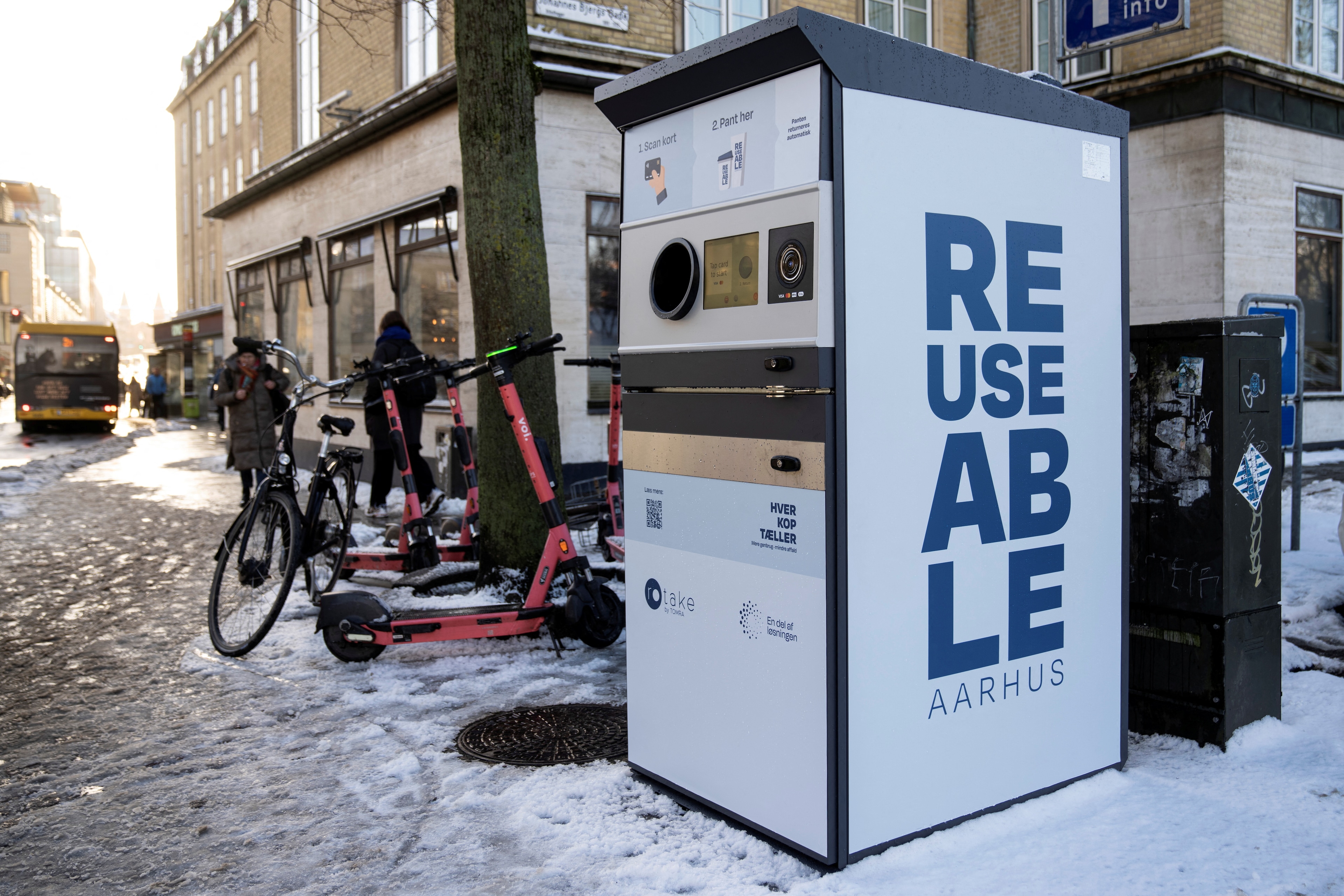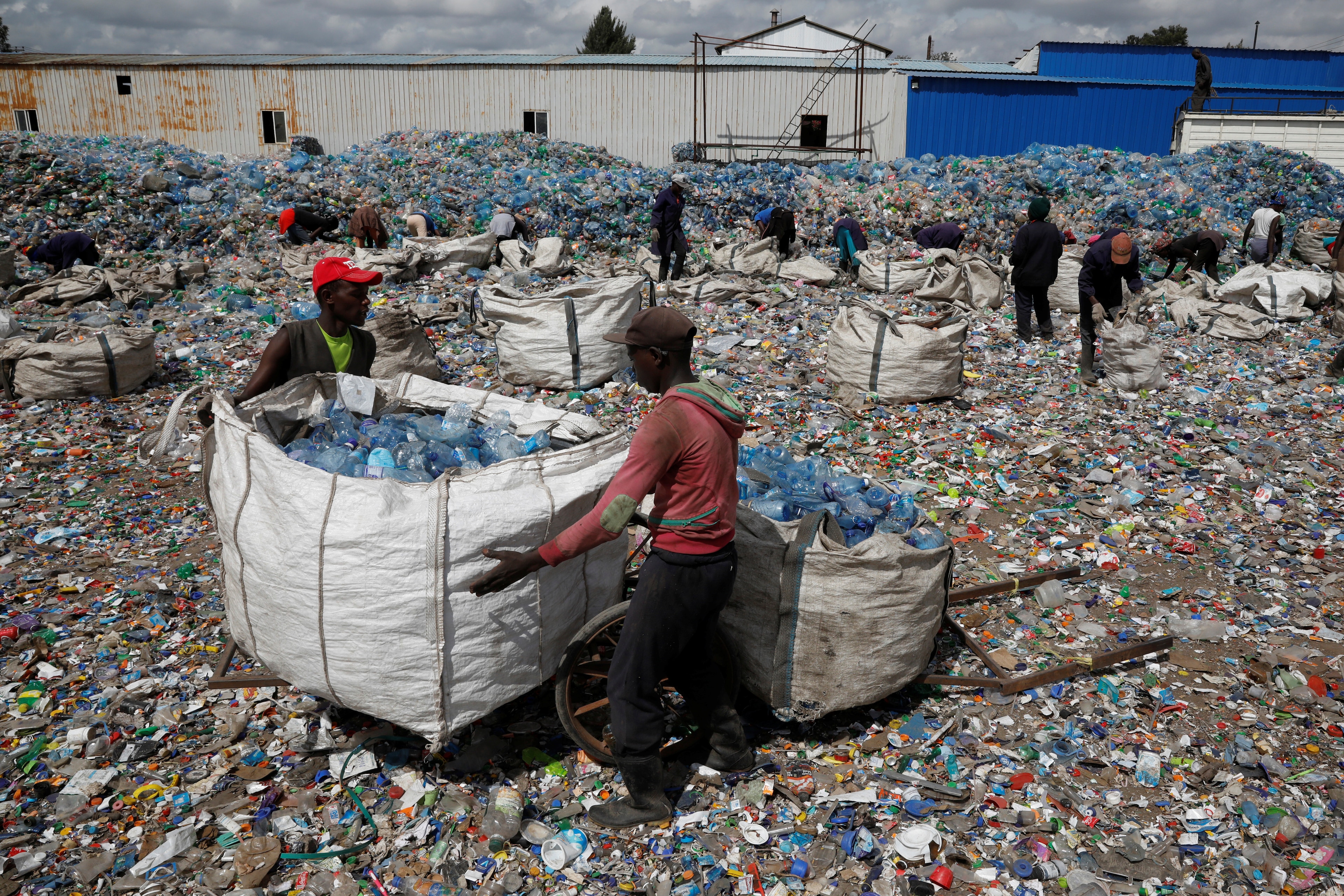What is ‘circular denim’ and why are top brands redesigning jeans?

It takes 3,781 litres of water to make a single pair of jeans.
Image: Unsplash/Jason Leung
Stay up to date:
Circular Economy
Listen to the article
- It takes 3,781 litres of water to make a single pair of jeans.
- Circular production methods could trim the amount of water and other resources denim consumes.
- Many leading brands are backing a circular economy for jeans.
For millions of people around the world, denim is a wardrobe staple. Yet a single pair of jeans uses 3,781 litres of water in its production lifecycle. Now top brands are having a rethink and backing a circular economy for denim.

Biodegradable buttons
Every year, hundreds of millions of jackets, jeans, shirts and skirts are made, shipped and sold around the world, consuming colossal amounts of water, energy and cotton. Added to which, many items of clothing eventually end up in a landfill site.
The Ellen MacArthur Foundation has established a set of guidelines called The Jeans Redesign, to encourage a greater use of the circular economy within the denim sector. So far, dozens of brands have signed up and pledged their support. They include some of the industry’s biggest names, including Gap, H&M, Wrangler and many more.
“In a world with limited resources, we must move to an industry founded on circular economy principles,” said Martijn Hagman, CFO of Tommy Hilfiger Global, in the Jeans Redesign report. “Through transparency and coming together to share best practices we can drive the fashion landscape forward towards this future vision.”
Everything from metal rivets and zippers to the proportion of reused fabric is now an important part of the way denim clothes are designed and made. One of the participants, Frame, has launched a jacket called the Ellen, which is made from 100% organic cotton. It is 90% biodegradable, and the manufacturers say that claim includes the metal buttons, pocket lining and tags.
A stitch in time
Although not part of the Jeans Redesign project, the Swedish denim brand Nudie is another devotee of the circular economy. It encourages customers to return their unwanted, or no longer needed, denim and get a credit towards another pair; it also offers a lifetime repair service on its jeans.

In 2019, Nudie says it repaired 63,281 pairs of jeans and collected 11,573 pairs that customers no longer needed. That led to 50,000kg of clothing being diverted from landfill, and 443,000,000 litres of water being saved that would otherwise have been used in the production of new clothing.
What is the World Economic Forum doing about the circular economy?
Circular thinking
Traditional manufacturing has followed a flat, linear model. Resources are transformed into products which are sold and eventually discarded.
Circularity calls for a fundamental change, starting with design and running all the way through a product’s lifecycle.
Its chief principles are that products should be designed with easy reuse or recycling in mind, that reused materials should be used instead of net new resources where possible, and that products should last longer.
Accept our marketing cookies to access this content.
These cookies are currently disabled in your browser.
Don't miss any update on this topic
Create a free account and access your personalized content collection with our latest publications and analyses.
License and Republishing
World Economic Forum articles may be republished in accordance with the Creative Commons Attribution-NonCommercial-NoDerivatives 4.0 International Public License, and in accordance with our Terms of Use.
The views expressed in this article are those of the author alone and not the World Economic Forum.
Related topics:
Forum Stories newsletter
Bringing you weekly curated insights and analysis on the global issues that matter.
More on Circular EconomySee all
Henrik Hvid Jensen
August 7, 2025
Pedro Gomez and Clemence Schmid
August 6, 2025
Oliver Kade and Sarah Hadley
July 28, 2025
Elena Raevskikh and Giovanna Di Mauro
July 23, 2025
Jonquil Hackenberg
July 9, 2025





